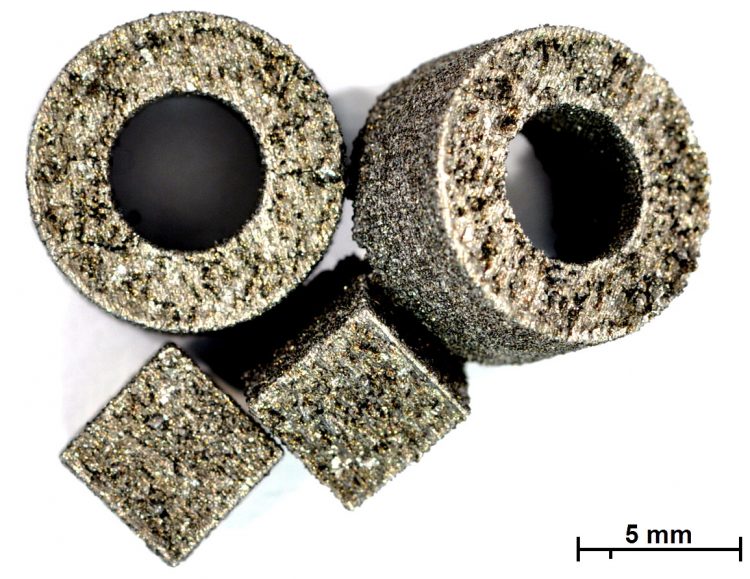Super magnets from a 3D printer

The research team has now succeeded in producing miniaturised supermagnets using laser-based 3D printing. Image: IMAT – TU Graz
Permanent magnets are incorporated into a number of mechatronic applications.
Traditional manufacturing methods such as sintering or injection moulding are not always able to cope with increasing miniaturisation and the resulting geometric requirements for magnets, and this is a trend which is sent to continue in the future.
Additive manufacturing processes offer the necessary freedom of design.
The research team, involving Prof. Dr. Jörg Franke from the Institute for Factory Automation and Production Systems at FAU, has now succeeded in creating super magnets using laser-based 3D printing.
Metallic powder of the magnetic material is added layer by layer and the particles are joined by melting.
The process allows magnets to be printed with a relatively high density at the same time as controlling their microstructure.
This allows researchers to tailor the magnetic properties to suit the required application exactly.
Further information
Prof. Dr. Ing. Jörg Franke
Institute for Factory Automation and Production Systems
Phone: + 49 9131 85 27569
joerg.franke@faps.fau.de
Media Contact
All latest news from the category: Machine Engineering
Machine engineering is one of Germany’s key industries. The importance of this segment has led to the creation of new university degree programs in fields such as production and logistics, process engineering, vehicle/automotive engineering, production engineering and aerospace engineering among others.
innovations-report offers informative reports and articles covering technologies such as automation, motion, power train, energy, conveyor, plastics, lightweight construction, logistics/warehousing, measurement systems, machine tools and control engineering.
Newest articles

An Endless Loop: How Some Bacteria Evolve Along With the Seasons
The longest natural metagenome time series ever collected, with microbes, reveals a startling evolutionary pattern on repeat. A Microbial “Groundhog Year” in Lake Mendota Like Bill Murray in the movie…

Witness Groundbreaking Research on Achilles Tendon Recovery
Achilles tendon injuries are common but challenging to monitor during recovery due to the limitations of current imaging techniques. Researchers, led by Associate Professor Zeng Nan from the International Graduate…

Why Prevention Is Better Than Cure—A Novel Approach to Infectious Disease Outbreaks
Researchers have come up with a new way to identify more infectious variants of viruses or bacteria that start spreading in humans – including those causing flu, COVID, whooping cough…



